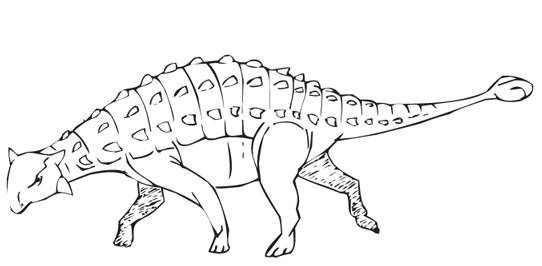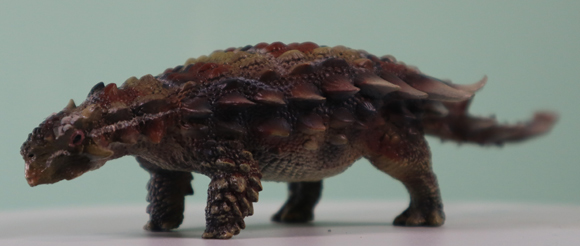What sort of Dinosaur was Thyreophora? A Great Question!
Thyreophora not a Dinosaur Genus but a Suborder of the Dinosauria
As team members of Everything Dinosaur visit schools and meet pupils we get asked lots of questions from enthusiastic dinosaur fans. One of our staff was asked the other day by one particular dinosaur fan, what sort of dinosaur was a Thyreophora? She had come across the word on line but she had not been able to find it in any of her dinosaur books.
Thyreophora
The word Thyreophora or thyreophorans does not relate to just one particular genus of dinosaur but describes a Suborder of the Dinosauria. The word means “shield bearers” and refers to a group of ornithischian dinosaurs characterised by the presence of armour plates arranged along their sides and the top of their bodies. The Suborder Thyreophora contains the familiar dinosaur families of the Stegosauridae and the Ankylosauridae.
An Illustration of a Typical Thyreophoran Dinosaur (Ankylosaurus)

Picture credit: Everything Dinosaur
The diagram above is of a Late Cretaceous thyreophoran dinosaur – Ankylosaurus, a heavily armoured, 10-metre-long herbivore from North America.
To view a model of Ankylosaurus and other dinosaur models which represents members of the Thyreophora: Dinosaur and Prehistoric Animal Models.
As well as the presence of dermal armour, these members of the bird-hipped group of dinosaurs are also distinguished by anatomical differences between themselves and other dinosaurs. These types of dinosaurs have unusual hip-bones, they lack the oburator process on the ischium. The oburator process is a blade-like process that projects out from the ischium, a bone in direct contact with the pubis bone in Ornithischia.
One of the earliest members of the Thyreophora was Scutellosaurus. It was a small (one metre long), fast running primitive member of this Suborder. Scutellosaurus had parallel rows of bony studs running down its neck and back and a long, thin tail. Its hindlimbs were longer than its forelimbs and it was probably a facultative biped. In biology, the term facultative describes the ability to undertake an activity by desire rather than obligation.
Facultative bipeds were quadrupeds that when required, were capable of rising up on their hind limbs and walking or running. As thyreophorans became larger and more heavily armoured they lost this ability to adopt a bipedal posture.
A Photograph of a Pinacosaurus Dinosaur Model (Thyreophora)

The PNSO Pinacosaurus in lateral view. A member of the Thyreophora. Picture credit: Everything Dinosaur.
Picture credit: Everything Dinosaur
To view the PNSO model range: PNSO Age of Dinosaurs Replicas.
Fossil evidence of the earliest known thyreophorans date from the Lower Jurassic, a number of fossils have been found in the Western United States and England. Scientists have postulated that the origins of this particular group of dinosaurs are in the Triassic, but as far as we know there have been no thyreophoran fossils found to date in strata dating from the Triassic.

